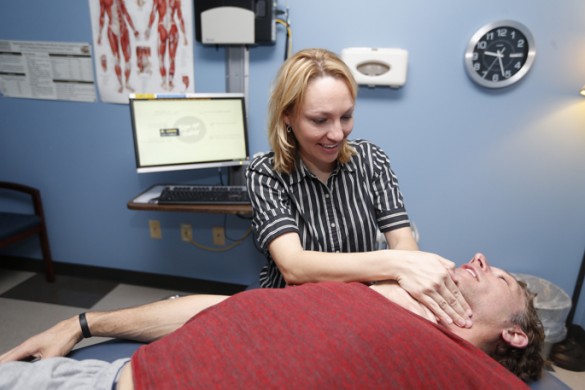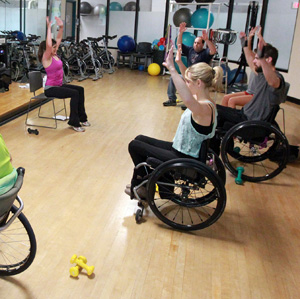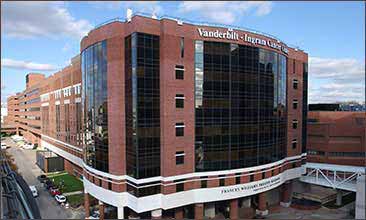
For singers who suddenly can’t hit their high notes or call center workers who develop pain while speaking, physical therapy may offer new treatment solutions.
A case series conducted by physical therapists at the Vanderbilt Dayani Center showed that physical therapy improved function for patients with muscle tension dysphonia (MTD).
MTD is a condition that impairs speaking, singing, breathing or swallowing. It is a muscular imbalance that causes the vocal cords to either pull apart or press together, and requires other muscles to get involved in speech production.
“Poor posture, other muscle imbalances and stress cause increased muscle tension. The increased tension then leads to further decreased range of motion and poor vocal quality, pain or dysfunction,” said Carey Tomlinson, P.T., MPT, first author of the case series published online in the Physical Therapy Journal.
MTD is often a gradual onset as muscles become more and more imbalanced.
“This is Nashville, so we see lots of singers who have been straining to hit their high notes. But we also see lots of teachers and preachers who have developed difficulty talking. Some people have had a 30-year problem and it’s finally gotten so bad they’re seeing a doctor,” Tomlinson said.
A physician in the Vanderbilt Voice Center first evaluates all patients with a voice complaint to ensure there are no structural problems. Then the patient sees a speech pathologist and is referred for physical therapy if appropriate.
Standard of care for MTD is voice therapy, but Tomlinson believes patients also benefit from more intense physical therapy.
“We’re working all the muscles attached to the vocal area. It’s a whole body approach to the problem,” Tomlinson said.
To test the idea, she followed nine patients through at least nine sessions that included hands-on manual therapy, therapeutic exercise and stress management education.
“It wasn’t a significantly significant cohort, but all the patients had an improvement in voice function, pain and range of motion. Three of the patients had clinically significant improvement in the voice measures,” Tomlinson said.
Next, Tomlinson is planning a full study with two cohorts — one receiving voice therapy alone and one receiving voice therapy plus physical therapy — in partnership with speech therapist Jennifer Craig.
“This is really a game-changer for our patients,” said Gaelyn Garrett, M.D., medical director for the Voice Center. “The prospective study is so important because it’s finding out which patients will benefit from physical therapy. It’s helping us know sooner who will benefit and not sending the wrong folks for treatment.”
Garrett said the Voice Center treats hundreds of patients each year with MTD. With physical therapy sessions scheduled twice a week for four-six weeks, Tomlinson recognized that it is a difficult treatment regimen.
“My ultimate goal is that the person from Oklahoma who comes here to the Voice Center for diagnosis can go back home and get the physical therapy they need. This case series was written for the physical therapist because there is a whole world of treatment we’re well-suited for based on our training,” Tomlinson said.















